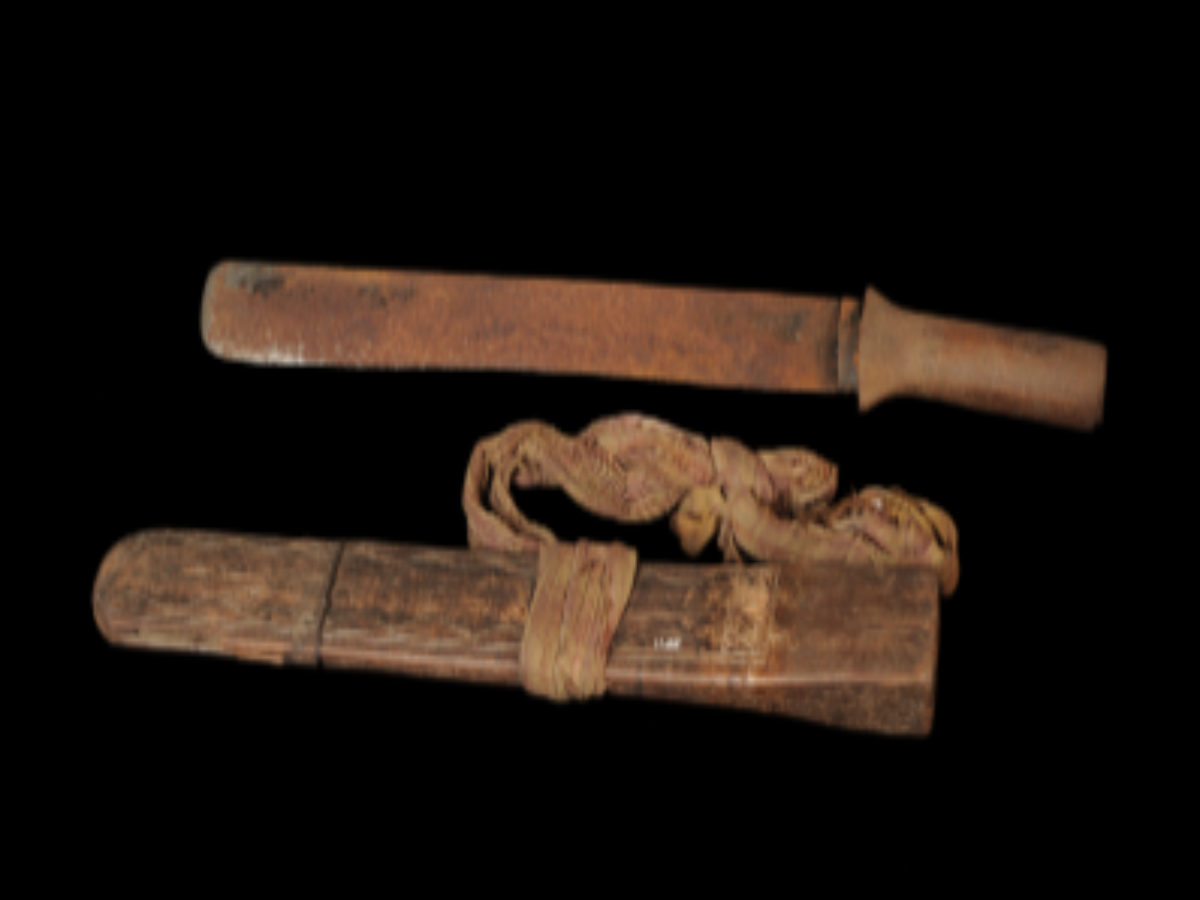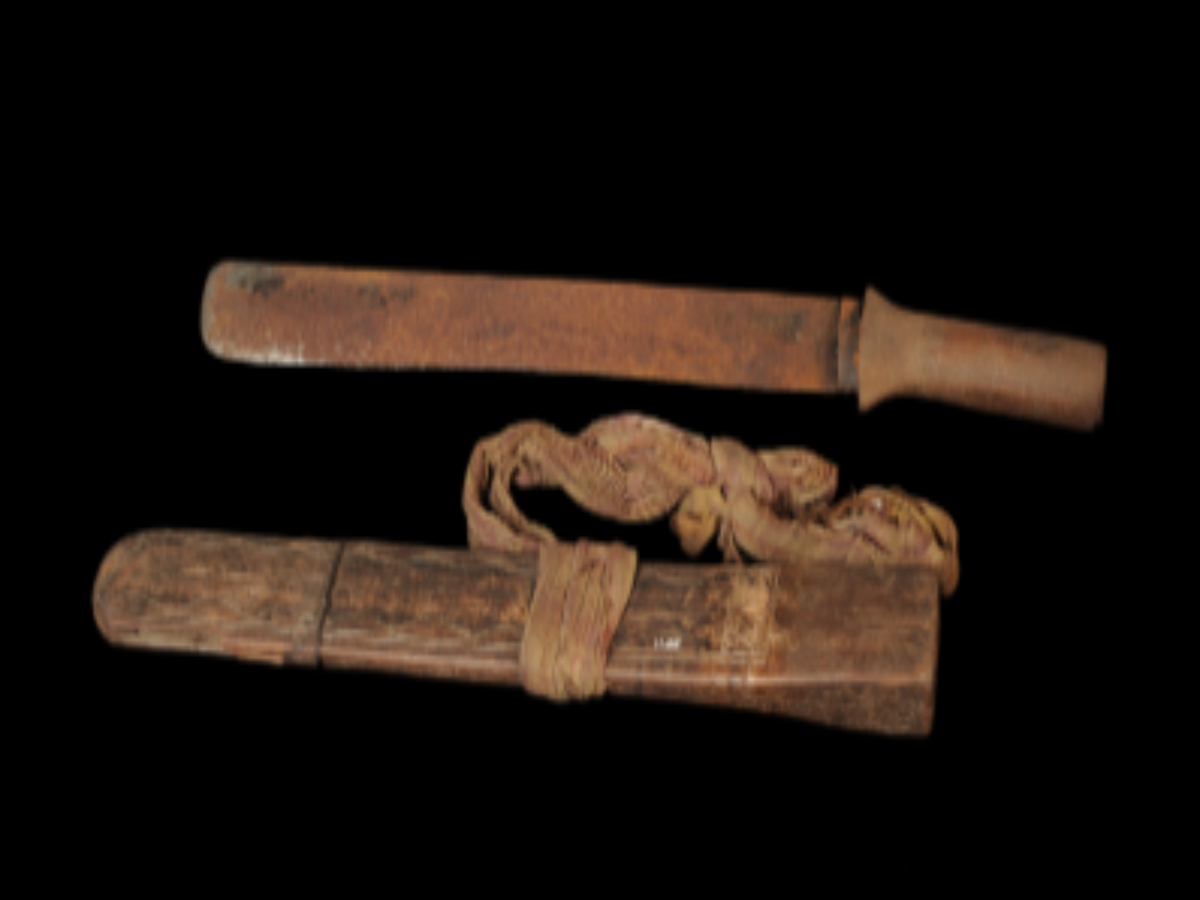State
Tribe Name
Art Type
short description
This traditional cutting tool Patam, an old cutting implement, is an important item owned by the Rabha Tribe of Assam and is currently kept at the Indian Museum, Kolkata. Designed with attention to practicality and durability, it has a sharp iron blade affixed firmly into a short piece of wood acting as a handle with a ferrule for the extra strength.The edge is sheathed behind, safely by a bamboo scabbard, which serves to keep its sharpness, as well as to manifest the Rabhas' ingenious artistic performer's skill in bamboo craftsmanship behind the edge. A cotton strap is tied around the sheath, thereby creating a portable manner of carrying-whether tied along with his waist or slung over the shoulder while doing daily work in fields and forests.
Thumbnail

Filter Postion
Left
Filter Background
Off
Theme
Filter Header Image

content
Image

description
This traditional cutting tool Patam, an old cutting implement, is an important item owned by the Rabha Tribe of Assam and is currently kept at the Indian Museum, Kolkata. Designed with attention to practicality and durability, it has a sharp iron blade affixed firmly into a short piece of wood acting as a handle with a ferrule for the extra strength.The edge is sheathed behind, safely by a bamboo scabbard, which serves to keep its sharpness, as well as to manifest the Rabhas' ingenious artistic performer's skill in bamboo craftsmanship behind the edge. A cotton strap is tied around the sheath, thereby creating a portable manner of carrying-whether tied along with his waist or slung over the shoulder while doing daily work in fields and forests.
Patam used for agriculture, household use, and such activities as cutting the forest. The multipurpose tool of the Rabha community is an indicator of their harmony with nature and a lifestyle of self-sufficiency. The selection of materials like iron, bamboo, wood, and cotton further indicates the tribe's eco-friendly concerns and indigenous knowledge systems.This Patam is more than just a tool-it is part of the identity of the tribe, passed through the ages, representing hard work, tradition, and even resilience.
Patam used for agriculture, household use, and such activities as cutting the forest. The multipurpose tool of the Rabha community is an indicator of their harmony with nature and a lifestyle of self-sufficiency. The selection of materials like iron, bamboo, wood, and cotton further indicates the tribe's eco-friendly concerns and indigenous knowledge systems.This Patam is more than just a tool-it is part of the identity of the tribe, passed through the ages, representing hard work, tradition, and even resilience.
Image Mode
landscape
promoted
On
Verified
Off
